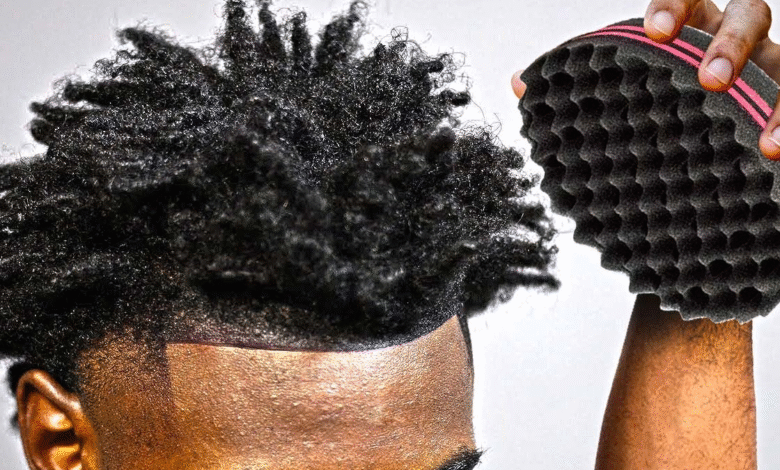Freeform Dreads: The Ultimate Guide to Natural, Authentic Hair

Discover the ultimate guide to freeform dreads, including care, growth tips, and styles. Learn everything you need to know to embrace natural, authentic dreads with confidence.
What Are Freeform Dreads?
Freeform dreads are a natural, organic way of growing dreadlocks without extensive manipulation or artificial styling. Unlike traditional dreadlocks that require twisting, rolling, or crocheting, freeform dreads grow according to your hair’s natural texture and pattern. This makes them highly unique and personal to every individual.
The philosophy behind freeform dreads isn’t just about hair—it’s a lifestyle choice. Many people choose freeform dreads as a way to embrace their natural hair, reject societal norms, and connect with a more holistic, authentic approach to self-expression. They are less about strict rules and more about letting your hair tell its own story.
How Freeform Dreads Form
Freeform dreads develop naturally over time. When hair is left alone, tangles and knots form, and these eventually mat together to create locks. The process begins with small sections of hair intertwining, and over months or years, these sections grow thicker and denser.
Each person’s hair will lock differently. Curly and coily hair textures tend to form dreads faster than straight hair. It’s a process that requires patience, observation, and minimal interference. Some people even allow their hair to dangle freely, occasionally rinsing or moisturizing but rarely combing or detangling.
“Freeform dreads are not just a hairstyle—they’re a journey of letting your hair express its natural rhythm.”
Benefits of Freeform Dreads
Choosing freeform dreads comes with a variety of benefits. First and foremost, they encourage natural hair health. Without constant manipulation, your hair avoids breakage, split ends, and damage caused by combing, twisting, or chemical treatments.
Freeform dreads are also incredibly low maintenance. Once the initial stage of locking begins, the hair largely takes care of itself. This makes them perfect for people who want a more laid-back, authentic look without constant upkeep. Beyond practicality, freeform dreads also carry cultural and spiritual significance in many communities, symbolizing patience, individuality, and inner strength.
The Freeform Dreads Process
Unlike traditional dreadlocks, freeform dreads don’t require an initial setup. The process is largely about patience and minimal interference. The hair is allowed to tangle and mat naturally over time, forming locks according to its texture.
Some people may choose to accelerate the process with occasional sectioning to guide hair growth. Others prefer to let it form completely organically. A key part of the process is washing and moisturizing without disturbing the locks. Using residue-free shampoos and natural oils like jojoba or coconut can support healthy growth.
| Step | Action | Notes |
|---|---|---|
| Initial | Leave hair untouched | Avoid combing or detangling |
| Early Locking | Occasional separation | Only if sections merge too much |
| Maintenance | Wash gently | Use residue-free shampoos |
| Growth | Moisturize | Avoid heavy creams that cause buildup |
| Maturation | Let hair mature naturally | Can take months to years |
Freeform Dreads vs. Traditional Dreads
The difference between freeform dreads and traditional dreadlocks is primarily in maintenance and appearance. Traditional dreads require twisting, palm rolling, or crocheting to create uniform locks. Freeform dreads, on the other hand, embrace natural tangles, resulting in more varied sizes and shapes.
Many people love freeform dreads because they offer true individuality. No two locks are the same, and each one reflects personal hair growth patterns. While traditional dreads can look uniform and polished, freeform dreads carry a natural, authentic aesthetic that can’t be replicated artificially.
“With freeform dreads, your hair becomes a personal canvas—a reflection of time, care, and your natural texture.”
Caring for Freeform Dreads
Caring for freeform dreads is simple but requires consistency. The primary focus should be cleanliness, moisture, and patience.
- Washing: Use residue-free shampoos to avoid buildup. Wash once a week or as needed, depending on hair type.
- Moisturizing: Light oils and water sprays keep hair healthy without interfering with locking.
- Avoid Excessive Manipulation: Refrain from combing or detangling, as this slows down the locking process.
Regular maintenance is minimal, but occasional separation of merged locks may be necessary to prevent discomfort or scalp strain.
Freeform Dreads Styles and Versatility
Freeform dreads are surprisingly versatile. Even though they grow naturally, you can still style them in ways that enhance their appearance. Popular styles include buns, half-up hairstyles, ponytails, and letting the hair flow freely.
Accessories like beads, wraps, or natural threads can be added without compromising the organic growth. Unlike traditional dreads, you have the freedom to experiment without strict rules, giving you a look that’s as unique as your hair itself.
Common Challenges and How to Overcome Them
Like any natural hairstyle, freeform dreads have challenges. One common issue is uneven locking, where some sections lock faster than others. Patience is key here, as hair eventually balances out over time.
Another challenge is odor or buildup, which can occur if hair isn’t washed properly. Using residue-free shampoos and keeping the scalp clean will solve this. Frizz is also natural in freeform dreads, but embracing it adds to the authentic, organic look of the hairstyle.
Freeform Dreads for Different Hair Types
Freeform dreads can be achieved by most hair types, but the texture affects the speed and appearance of locking.
- Curly and Coily Hair: Locks form faster and tend to be thicker.
- Wavy Hair: Locks may form slower but still achieve natural dread patterns.
- Straight Hair: Takes longer and may require patience and minimal sectioning for optimal locking.
No matter your hair type, freeform dreads encourage individuality and natural beauty.
Freeform Dreads Maintenance Schedule

Consistency is key to healthy freeform dreads. While they require less attention than traditional dreads, a basic maintenance routine can prevent issues:
- Weekly: Gentle wash and moisture spray
- Monthly: Inspect locks for merging or scalp buildup
- Quarterly: Trim loose or damaged ends if necessary
A consistent routine ensures your hair remains healthy while embracing the natural growth process.
Myths About Freeform Dreads
Many myths surround freeform dreads, such as the idea that they are dirty or unprofessional. In reality, freeform dreads are simply a natural hairstyle, and with proper care, they are clean, healthy, and stylish.
Another myth is that freeform dreads are uncontrollable. While they do grow organically, regular care and attention prevent tangling or matting issues. Understanding the facts about freeform dreads helps break stereotypes and promotes hair positivity.
Quotes About Freeform Dreads
“Your hair is your crown; let it grow naturally and wear it with pride.”
“Freeform dreads teach patience, self-love, and embracing imperfections.”
“Every lock tells a story—no two are alike, just like life itself.”
FAQS About Freeform Dreads
Q: How long does it take to grow freeform dreads?
A: The timeline varies by hair type and texture. Curly and coily hair may lock in months, while straighter hair can take years. Patience is key.
Q: Can I wash my freeform dreads?
A: Yes! Washing is essential for scalp health. Use residue-free shampoos and avoid excessive manipulation.
Q: Do freeform dreads require combing?
A: No. Combing or detangling interrupts the natural locking process. Occasional separation of merged sections is fine.
Q: Can freeform dreads be styled?
A: Absolutely! You can tie them, braid them, or accessorize with beads or threads while letting them grow naturally.
Q: Are freeform dreads suitable for all hair types?
A: Yes. Every hair type can achieve freeform dreads, though the speed and texture of locking will vary.
Conclusion
Freeform dreads are more than a hairstyle—they’re a lifestyle choice that embraces natural beauty, patience, and individuality. By allowing your hair to grow and lock organically, you create a unique, authentic look that’s entirely your own. With minimal maintenance and a focus on hair health, freeform dreads are a versatile and empowering way to celebrate your natural texture.





